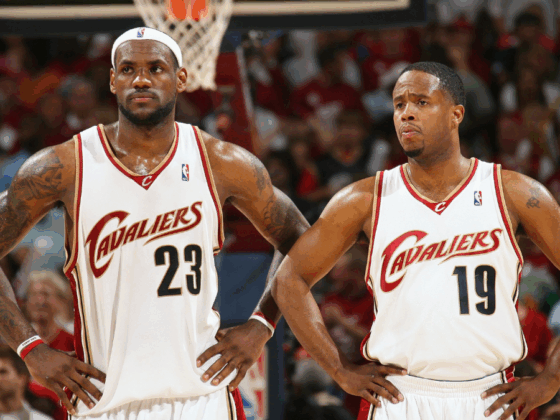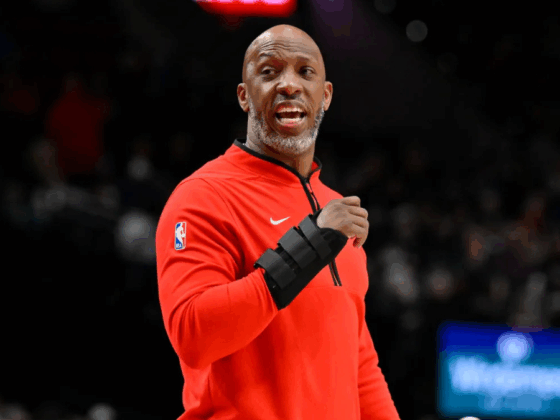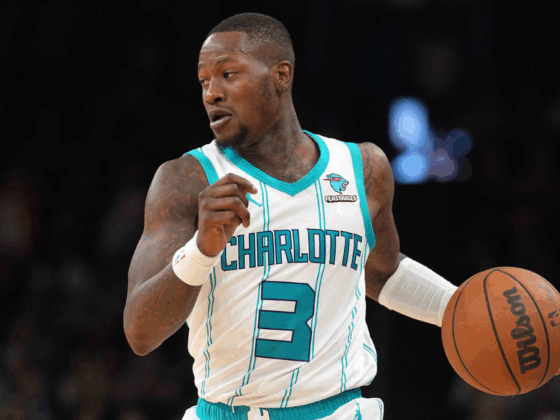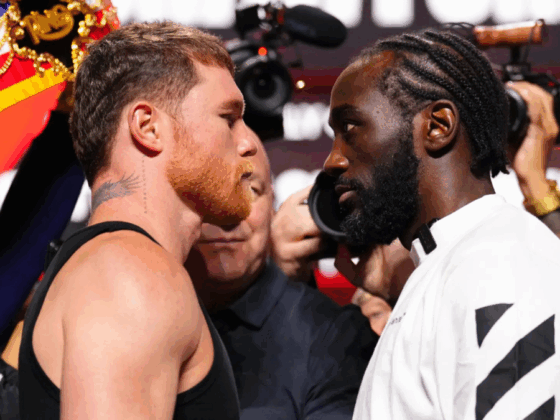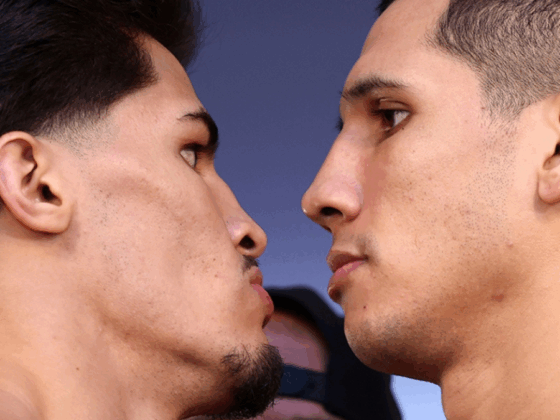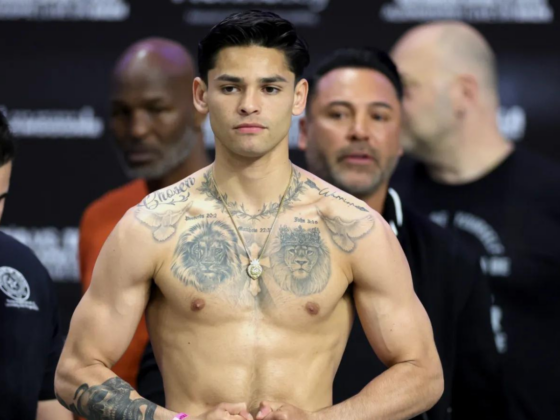The NBA Twitter world has been in disarray since the Finals ended. From Dennis Rodman making diplomatic visits to North Korea to free agency chaos, who knows where tomorrow’s arguments will come from. I thought I’d do my part to soothe tensions by making a completely pointless list of the best young players in the game. At number one on my list of guards, the Philadelphia 76ers’ Ben Simmons.

Ben Simmons won the NBA’s Rookie of the Year honor in 2017-18. How good can the young Sixer get?
A few notes to consider:
- The NBA landscape has changed dramatically in recent years. Positional fluidity, as well as a glut of the best guys growing up with the ball in their hands playing point guard, has led to a dearth of classic off-guards. Even guys who are classified as twos, Donovan Mitchell and Devin Booker, for example, spend a ton of time with the ball in their hands running the offense. For the purposes of a livelier debate, I decided to roll with young guards as a group.
- Playoff potential (or performance) is weighted heavily. Players who have a major weakness to be exploited will be docked accordingly, at least until it’s somewhat rectified.
- The list is a ranking based on projecting the players going forward, not a ranking of how good the players are right now.
- I haven’t included anyone from the upcoming draft class. Trae Young may very well be the next Stephen Curry, but we won’t know for sure until he’s dropping in 30-footers at the highest level.
- This is a list of the best talent under-23. The best. All of these guys are really good. If I happen to put one guy over your favorite player, it’s not that I hate your favorite player or team. Please try to remember this before you set fire to my Twitter mentions calling me an idiot (though you certainly might be right in a more general sense).
Number 1: Ben Simmons
Ben Simmons (16 points/8 assists/8 rebounds) posted one of the most well-rounded stat lines in the league in 2017-18. Winner of one of the more hotly-contested Rookie of the Year races in recent memory, Simmons was able to impact winning at a level beyond almost any first-year player* since Chris Paul.
*As an aside, how screwed is the incoming class? Talk about unreasonable expectations.
All-in-one metrics which attempt to gauge a player’s impact on team performance aren’t perfect, but Simmons graded out very well in most. Per ESPN and Basketball-Reference:
- Real plus-minus (RPM): +2.89 (11th among point guards)
- Offensive real plus-minus (ORPM): +1.44 (18th among point guards)
- Defensive real plus-minus (DRPM) +1.45 (8th among point guards)
- Value over replacement player (VORP) 4.6 (11th in the NBA)
Players with Simmons’ jaw-dropping combination of size, passing, athleticism, and positional versatility are as rare as they come. Really, only LeBron James and Giannis Antetokounmpo are in the same ball-park.
The term “savant” is thrown around a bit recklessly in coverage of the NBA. Try finding a better word to describe a guy with this kind of vision (courtesy of NBA.com).
Simmons’s height allows him to hit angles smaller guys just can’t. Combine his elevated vantage-point and feel for the game, and you have one of the best passers playing in the NBA.
Brett Brown’s offensive system is designed to get easy baskets. Off-ball movement is an easy principle to preach when the effort is rewarded. The Sixers ranked second in cut frequency in 2017-18. Watch this beautiful lob to Embiid as he sneaks in behind the Spurs defense:
Offensively, Simmons is as good as anyone in the NBA once he has a step on the defense. Dunks (148 on the season) accounted for roughly a quarter of Simmons points on the season. There is just not much you can do to stop a guy with his size, explosiveness, and handle once he turns the corner:
Defense and Drawbacks
Though not quite the All-NBA-level defender many claim, Simmons is already really good and projects to be great. Sloppy passes and ballhandling are punished:
He can defend the rim in a pinch. All five positions can be covered, depending on the match-up. In fact, though Embiid is arguably a top-three defender in the league, one could argue that Simmons is the more valuable defender in the postseason.
The best teams in the league can drag guys like Embiid and Rudy Gobert out of the paint. Not only is defending in space uncomfortable for both guys, but it also takes them away from the area of the court they impact the most: the rim. Small-ball five (though, oddly, the Sixers would still be massive in the frontcourt with guys like Robert Covington and Dario Saric) is a real possibility going forward.
Simmons’s limited range clearly wasn’t a problem in the regular season. Things became a bit dicier in the second-round of the playoffs. The Celtics erected a wall around the paint, frustrating Simmons into a subpar series (at least scoring the ball). Inexperienced under such duress, he found it difficult to attack with his usual level of gusto and efficiency.
Simmons scored 18.2 points a night on 50 percent from the floor versus the Heat. Though his percentage at the rim dropped from the regular season (from 71.0 percent to 62.8 percent), he got to the basket an incredible 8.6 time per game. The Celtics, by contrast, were able to limit him to 6.6 attempts over five games. Harassed with multiple bodies every time down the court, frustration was apparent:
Simmons’s scoring average dropped to 14.4 points on 47.4 percent from the floor, including a one-point stinker in Game 2 (on just four attempts). He bounced back with decent games in the remainder of the series, but how he can evolve in future postseasons remains an open question.
Going Forward
First, as a basketball community, let’s breathe a collective sigh of relieve. The Kardashian curse is no longer a lingering threat. I’m far from a mystical man, but no chances should be taken with a prospect like Ben Simmons.
Simmons is already a consensus top-30-or-so player in the league. To be as good as he was as a rookie, with such a glaring weakness in his game, should inspire optimism. Stuffing boxscores, making your teammates better, and playing plus-defense is an awesome floor.
Simmons has best-in-the-NBA-level talent. If he’s ever to get there, however, he’ll probably need to attempt more than 11 threes in a season, the majority of which were halfcourt heaves. While I compared Simmons to Giannis and LeBron earlier, they’re not quite apples to apples. Giannis can euro-step from the three-point line. LeBron had more three-pointers made in his first 15 NBA games than Simmons had attempted all last season.
The rumblings from Simmons camp are positive. Fixing his jumper is his sole offseason focus. It’s unrealistic to expect too much in that department in Year Two, but a willingness to take jumpers without hesitation would be a marked improvement.
Jumper or not, he’s still the NBA’s best guard prospect heading into the future.
